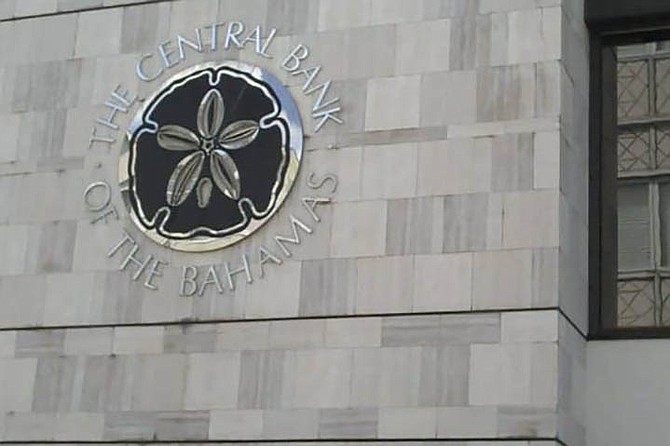By NEIL HARTNELL
Tribune Business Editor
nhartnell@tribunemedia.net
Bahamian commercial banks saw total private sector loan arrears increase by $76m during the 2020 fourth quarter as the sector’s collective profitability shrunk by 37 percent year-over-year.
The Central Bank, in its economic review of the year’s final three months, said the credit portfolio deterioration experienced from October onwards accounted for all but $10m of the year’s total $87m increase in loan arrears as deferrals continued to unwind amid COVID-19’s economic devastation.
“Banks’ credit quality indicators deteriorated during the fourth quarter, reflecting the ongoing slowdown in domestic economic activity related to the COVID-19 pandemic. Total private sector loan arrears rose by $75.8m (10.9 percent) over the quarter, and by $86.7m (12.6 percent) on an annual basis to $773.1m,” the Central Bank said.
“Consequently, the ratio of arrears to total private sector loans firmed on a quarterly and year-on-year basis, by 1.5 and 1.7 percentage points, respectively, to 13.8 percent.”
Taking a deeper dive into the credit quality decline, the regulator added: “An analysis by the average age of delinquencies revealed that short-term (31- 90 day) arrears grew by $66.4m (28.6 percent) to $298.5m, with the associated ratio increasing by 1.2 percentage points to 5.3 percent of total private sector loans.
“In addition, the non-performing segment - arrears in excess of 90 days and on which banks have ceased accruing interest - rose by $9.4m (2 percent) to $474.6m, contributing to a 25 basis point rise in the corresponding ratio to 8.5 percent of total private sector loans.”
Breaking the banking industry’s delinquency increase down by loan category, the Central Bank added: “The expansion in total private sector loan arrears was mainly due to an $86.7m (21.7 percent) growth in mortgage delinquencies to $486.2m......
“In contrast, the commercial segment reduced by $11.6m (16.6 percent) to $58.2m, with the associated ratio narrowing by 1.3 percentage points, to 7 percent. Meanwhile, the non-performing loan rate for consumer loans stood at 6.8 percent versus 5.2 percent in the previous year, and businesses at 4.9 percent compared to 6.1 percent at end-2019, while mortgages was relatively unchanged at 11.1 percent.”
As for the consequences, the report said: “Banks increased their total provisions for loan losses by $56.1m (10.9 percent) to $569.7m over the quarter. Consequently, the ratio of provisions to non-performing loans and to total arrears grew by 9.6 percentage points to 120 percent, and by four basis points to 73.7 percent, respectively.
“Also, specific provisions relative to non-performing loans increased by 4.3 percentage points to 83.4 percent. Further, banks wrote-off an estimated $40.8m in delinquent loans and recovered approximately $5.4m during the review period.”
When it came to commercial bank profitability, the Central Bank said: “During the third quarter of 2020, banks’ overall profitability contracted by $15.1m (36.8 percent) to $25.9m relative to the same period of 2019, as institutions continued to increase their provisioning for bad debt to buffer against predicted losses related to the COVID-19 pandemic.
“Most profitability ratios trended downward over the review quarter. As a percentage of average assets, the gross earnings margin narrowed by 24 basis points to 5.23 percent, as the interest margin fell by 27 basis points to 4.91 percent, while the commission and foreign exchange ratio edged up by 3 basis points, to 0.33 percent.
“Similarly, the net earnings margin ratio reduced by 30 basis points to 1.55 percent, as the operating costs ratio increased by 6 basis points to 3.69 percent. As a consequence of the rise in bad debt provisioning, the net income ratio narrowed by 64 basis points to 0.94 percent,” the regulator continued.
“With regard to profitability components, the net interest margin edged up by $0.8m (0.6 percent) to $135.4m, as interest expense declined by $4m (30.1 percent) to $9.2m, outstripping the $3.2m (2.2 percent) reduction in interest income to $144.6m.
“In addition, income from commission and foreign exchange fees rose by $1.4m (18 percent) to $9.1m, contributing to a $2.2m (1.5 percent) increase in the gross earnings margin to $144.4m.”





Comments
Use the comment form below to begin a discussion about this content.
Sign in to comment
Or login with:
OpenID